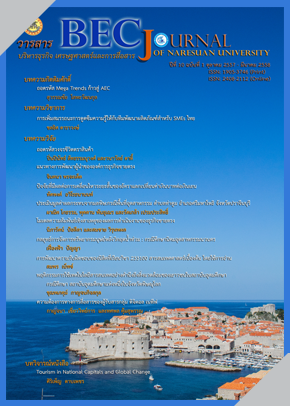ความต้องการทางการสื่อสารของผู้รับสารกลุ่ม ดิจิตอล เนทีฟ
Main Article Content
บทคัดย่อ
Communication needs of the recipients of the digital native
This study aims to investigate the needs of teenagers, who are currently studying in non-formal and formal education schools, about the communication and communicative contents required on economic route from the east to west side, through the lower-northern part (Phetchabun, Phitsanulok, Sukhothai and Tak) of Thailand. The qualitative research was conducted, which data collection was achieved by group conversations. In addition, the results of this study were analyzed, which is based on Sowter and Wearing’ perspective needs of communication. The analysis was classified into two groups – Sectoral Analysis, first, indicates that the teenagers use communicative technology, in their everyday lives, through wireless and LAN Internet networks. Moreover, they need more effective distribution of wireless communication network with lower price, including through mobile phone and Internet network in academic institutions and everyday lives. The teenagers also require online media which gives them instant access to it. This reason allows them to be able to immediately access online media or websites, however, they are likely to place more reliability on radio and newspaper than the online social networking. Secondly, the analysis on Partitioning Society shows that the teenagers’ preference on media contents, mostly from websites and social networking such as Facebook, Line, is based on individual interest. The media contents consumed by the participants mostly are entertainment news which is basically involved with entertaining matters. In the other hand, the news related to politics, economies, and educations are the type of news that is least consumed by the teenagers, which they are suggested to be simplified to be as convenient for being instantly accessed and understood, based on the consumers’ habits.


